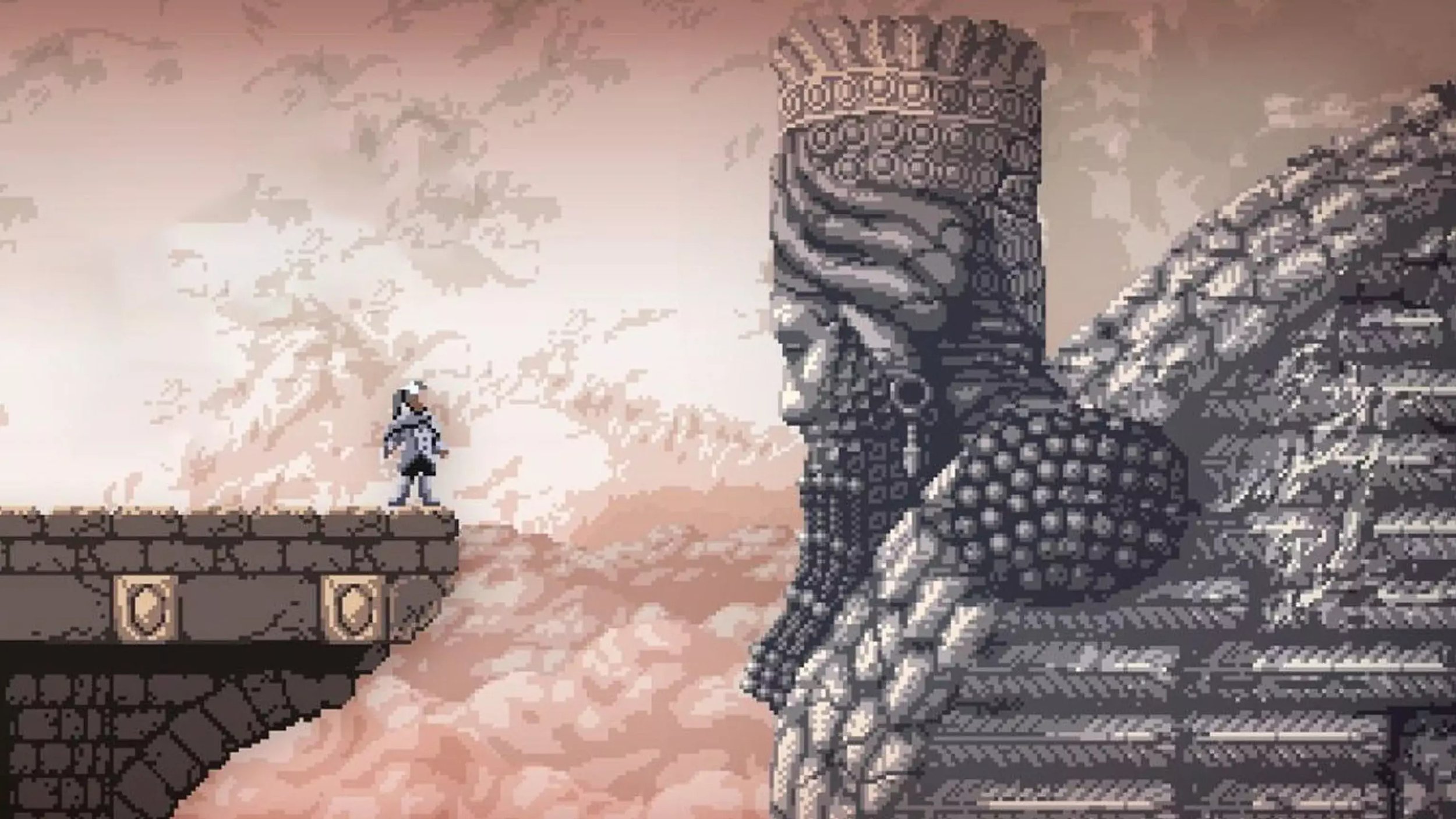Axiom Verge 2
Roger Whitson, Managing Editor
I’ve found few sequels that have departed as much from the formula of their predecessors as Thomas Happ’s Axiom Verge 2. The first Axiom Verge was an interesting, if forgettable, metroidvania that looked like a forgotten Contra sequel. I spent most of my time shooting enemies and collecting powerups. Axiom Verge 2 completely overhauls the formula that made the first game such an imitation of past side-scrolling shooters. Gone is the shooting, replaced with inventive tools and technologies. I was given a few weapons like an icepick, an axe, and a boomerang — but the game largely scraps combat for exploration and tinkering with the environment. Hacking forms an important part of the gameplay, as I gained the ability to turn my enemies into allies, overload systems, and open boundaries.
Much of the game is also spent as a drone with its own set of power-ups and weaknesses. By the end of the game, the drone had so easily traversed the terrain that I preferred that form over my standard humanoid one. The Breach, an alternate universe that appeared in the first Axiom Verge but is much more developed in the sequel, has its own parallel map that can be fully explored. Axiom Verge 2’s approach to the Breach reminded me of Dracula’s inverted castle in Castlevania: Symphony of the Night or the Dark World in The Legend of Zelda: A Link to the Past, except the graphics have 8-bit pixels that usefully distinguish it from the 16-bit Overworld found in the rest of the game.
These improvements are part of the delight Axiom Verge 2 takes in exploration, and the changes that go along with it. Everything changes, everything is impermanent and in flux. Ancient alien species battle one another over scales of time that are almost incomprehensible. The Axiom Verge 2 wiki points out that the second game takes place both before and after the events of the first, lending more than a few timey-whimey elements to the game. Meanwhile, my own mortality was all too obvious. Indra Chaudhari begins the game as a billionaire in a world that looks much like ours. She arrives in a helicopter, searches arctic habitats, and operates computers to find traces of her lost scientist colleagues. Fairly early on in the game, however, Indra drowns. She’s resurrected in a nanite body that has no need to breathe and can explode itself to remove obstacles.
As the game moves on, Indra’s power-ups make her seem less and less human. She’s given the ability to transfer her consciousness to a small robotic drone while her nanite body slumps over, lifeless. Yet soon, her nanite body is also stolen by the antagonist Amashilama, leaving Indra trapped as a drone. Even though Indra eventually gains the ability to revert to a vaguely-resembling humanoid form by collecting another power-up, this new body is much more robotic than her previous one. Just who exactly is Indra: the human billionaire who died early in the game, the nanite body possessed by Amashilama and who subsequently dies in the middle of the game, or the robotic body that is constantly destroyed and reconstructed every time we change forms? During the end-sequence, Indra reveals that even she isn’t sure who she is anymore.
As the game progresses, the world around Indra also becomes stranger and stranger. The corporate office buildings of the first few minutes of the game quickly change to rolling grasslands populated by murderous robots. These open up to ancient Sumerian architecture, ruined underwater civilizations, and desert pyramids. Like many metroidvanias, Axiom Verge 2 features sections that are not passable until a particular power-up is acquired. I eventually encountered a character named the Lamassu, who looks like the Mesopotamian god of lore with a human head, a bull’s body, and wings. Yet I also encountered Lamassu as one of many blue “terminals” looking something like the Monolith from 2001: A Space Odyssey.
The 8-bit world of the Breach is much less detailed than the Kengir overworld. Accessed through one of many glitchy portals, the Breach features more organic enemies than the robotic antagonists of the overworld. The enemies are also much more alien: crabs with detachable claws, plants that spit a sticky substance making it impossible to attack, coral that shoot a poisonous dust into the air. Many reviewers mentioned the sense of isolation in Axiom Verge 2. For me, that isolation combined with a sense of vertigo as everything started changing, including myself.
Despite its gorgeous art and fascinating storyline, the one place some players might find Axiom Verge 2 lacking is combat. Bosses are few and far between. They don’t need to be beaten to progress and are most often lackluster in terms of a challenge. The final boss fight is more of a puzzle than a proper battle, with a respawn point in the middle of a room with a bomb that Indra must prime and set off while dealing with Amashilama’s various attacks. While players might scoff at the comparatively light combat, I’d argue that the game is more concerned with evolution and transformation than the comparatively banal battles we fetishize when playing a game. Whatever the case, Axiom Verge 2 is one of the more philosophical metroidvania games I’ve played in some time. If we see an Axiom Verge 3, and the ending sets up the possibility of another sequel, I’m eager to see if it matches this game’s sense of diving deep into an ancient alien world and finding oneself utterly transformed in the process.
For more metroidvania insights, read Christian Haines on the morph ball in the Metroid series and Nate Schmidt on the EMMI in Metroid: Dread.






